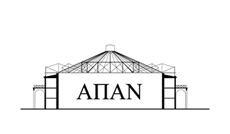McK. Camp II, Horses and Horsemanship in the Athenian Agora (1998)
[Bibliography]
John McKesson Camp II, Horses and Horsemanship in the Athenian Agora Series Agora Picture Book 24, (American School of Classical Studies at Athens, Princeton 1998)
“This concise and beautifully illustrated book demonstrates the many roles played by the horse in the lives of the Greeks, from its place in myth and early history to its significance as a marker of social status and its use in warfare, transportation, games, and festivals. From their arrival in Greece, at the start of the Middle Bronze Age (ca. 2000 B.C.), horses were a powerful symbol of rank. Bridles and other horse trappings are often found in graves, alongside vases depicting horses grazing, racing, and parading. Sculpture is also full of horse imagery, from monumental equestrian statues (a bronze leg and gilded sword are all that remain from one of these) to tiny terracotta figurines, perhaps the toys of a child. As well as presenting many examples of horse imagery found in the Agora, the author reports on recent finds near the ancient Hipparcheion, the stables of the Athenian cavalry.” Total pages 40, 56 col. & b/w figs
>>>>>> The Book in pdf https://agora.ascsa.net/id/agora/publication/agora%20picture%20book%2024

